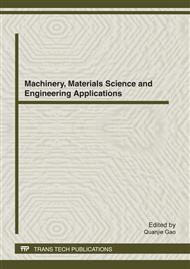p.549
p.555
p.559
p.563
p.569
p.575
p.579
p.585
p.590
Hydrothermal Preparation and Photocatalytic Activity of Different Morphology Titania
Abstract:
TiO2 samples with various shapes like flake, nanofiber and large grain were synthesized by template-free hydrothermal method with rutile TiO2 or tetrabutyl titanate (Ti (OC4H9)4, TBOT) as precursor. Photocatalytic degradation performances were investigated by using methyl orange (MO) as modeling pollutant. The results shown that pure mesoporous anatase TiO2-Grain showed the highest photocatalytic activity (3.7 times higher than P25), which is due to a combinative effect of anatase phase and high specific surface areas. The bi-phase flaky TiO2 also have higher activity than P25. While, nanofiber with TiO2(B) phase has the lowest photocatalytic activity. The large sized TiO2 grain can be separated and recycled easily after reaction.
Info:
Periodical:
Pages:
569-574
Citation:
Online since:
April 2012
Authors:
Price:
Сopyright:
© 2012 Trans Tech Publications Ltd. All Rights Reserved
Share:
Citation:


